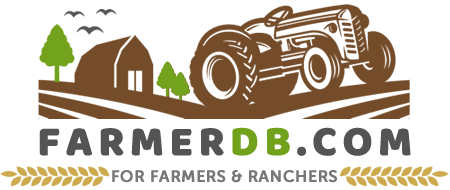Piglets usually stay with their mother from birth until they are weaned at around 7-9 weeks old.
During this time, the mother feeds and cares for them. However, there are times when this isn’t possible.
In some cases, piglets can’t stay with their mother, or the sow may not be able to care for them properly.

When this happens, piglets need foster care, and feeding them with foster milk becomes essential to help them survive and grow strong.
Contents
When Do Piglets Need Foster Milk?
Young pigs might need foster milk in the following situations:
- When the sow has more piglets than she can feed, some piglets may not get enough milk.
- If the sow dies or cannot care for her piglets, foster milk becomes essential for survival.
- A sow struggling to produce enough milk may leave piglets undernourished.
- If the sow is sick or recovering, she may not be able to nurse her piglets effectively.
- When the sow has mastitis or other conditions, milk production is reduced.
- In cases where a sow refuses to nurse some or all of her piglets.
What is Foster Milk?
Foster milk is a specially made milk substitute for piglets that contains all the essential nutrients they need, including proteins, fats, vitamins, and minerals, similar to those found in sow’s milk.
Proteins support muscle and tissue growth, fats provide energy and promote healthy development, while vitamins and minerals strengthen the immune system.
Choosing the Right One
The first thing to consider when choosing a milk replacer is to ensure that its formulation is specifically designed for piglets.
Next, check the ingredients to make sure they contain a balanced mix of proteins, fats, vitamins, and minerals for healthy growth. Milk replacers high in protein and fats are better absorbed by a piglet’s tiny body compared to those with lower levels of these nutrients.
For improved gut health, consider a product that includes added probiotics and prebiotics.
Another important factor to look for is ease of preparation. Choose a milk replacer that dissolves easily in warm water without clumping.
That’s all you need to keep in mind when selecting foster milk.
Avoid using milk substitutes intended for other animals, as they do not meet the nutritional needs of piglets.
Some people think cow’s milk can be a substitute, but it is not suitable for piglets. Cow’s milk contains far less fat than piglets require for proper development.
How Much to Feed Them
For newborn piglets, the general rule is to feed them milk replacer equivalent to 20% of their body weight per day, divided into feedings every 2 hours. For example, a 500g piglet would need about 3.4 fl oz (100ml) of milk replacer daily. Dividing that by 12 (for feeding every 2 hours), you would provide roughly 0.27 fl oz (8ml) per feeding.
Preparation
- Read the manufacturer’s guidelines and mixing ratios on the packaging.
- Prepare the measuring tools for milk powder and water, along with a mixing container or bottle.
- Warm the water to 100–104°F (38–40°C).
- Add the measured powder to the warm water and start shaking the mixture thoroughly until it is free of clumps.
- After feeding the piglets, wash all feeding tools and containers thoroughly to prevent bacterial growth.
Feeding Techniques
To feed piglets, there are multiple feeding techniques you can use to provide foster milk. Depending on the situation and the piglets’ behavior, you can choose the most appropriate method.
One technique is bottle feeding. In this method, piglets are fed using bottles with nipples or teats attached. Simply prepare the milk mixture, add it to the bottle, and allow the piglets to suckle.
Next is pan feeding, where piglets feed themselves from a shallow dish or pan. You just need to place the milk in the pan, and the piglets will drink from it. They typically learn this quite quickly.
Tube feeding is another technique that involves using a soft, flexible tube to deliver milk directly into the piglet’s stomach. This method is usually recommended when the piglet is sick or very weak and lacks the energy to suckle. The tube is inserted into the esophagus, allowing the piglet to be fed without effort.
Syringe feeding is another option, especially for weak piglets or those with a poor suckling reflex. You place the milk in a syringe and gently squirt it into the piglet’s mouth.
The nipple feeder bottle technique is similar to bottle feeding, but the bottles are attached to a stand, allowing the piglets to feed whenever they feel hungry.


